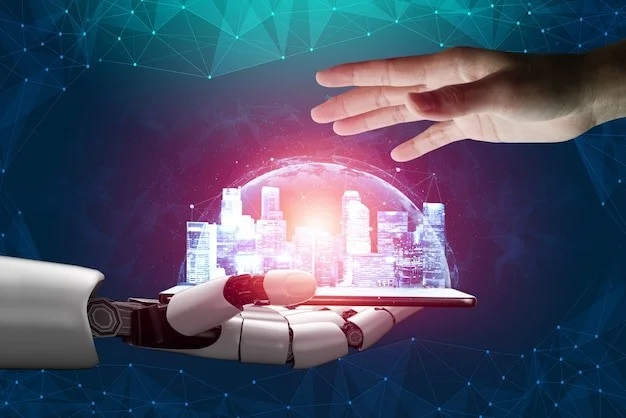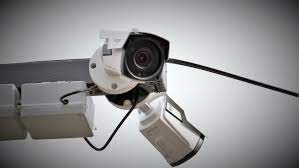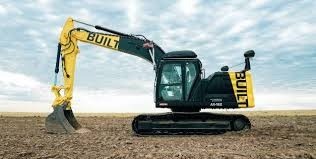AI and Machine Learning Technology in Intelligent Construction
These technologies are used for predictive maintenance of machinery, project scheduling optimization, and even safety monitoring by analyzing video feeds for potential hazards. Artificial Intelligent (AI) and Machine Learning (ML) play a crucial role in intelligent construction by enabling data-driven decision-making, automation, and predictive analytics.



Working of Artificial Intelligence
Key Features of AI and Machine Learning in Intelligent Construction:
- Design Optimization: AI and ML algorithms can analyze vast amounts of design data to optimize building layouts, structural elements, and energy efficiency, leading to cost-effective and sustainable designs.
- Building Information Modeling (BIM): AI-powered BIM systems enhance project coordination by automatically detecting clashes, streamlining design changes, and generating detailed reports. They improve collaboration among project stakeholders.
- Energy Efficiency and Sustainability: ML models can predict a building’s energy consumption based on design and usage patterns, allowing for the optimization of HVAC systems, lighting, and insulation to reduce energy costs and carbon emissions.
- Resource Management: AI-driven resource management systems optimize the allocation of materials and labor, reducing waste and improving project timelines.
- Predictive Maintenance: ML algorithms analyze sensor data from construction equipment to predict when maintenance is needed, minimizing downtime and reducing repair costs.
Types of AI Products Used in Intelligent Construction:
- AI-Enabled Cameras and Sensors: High-resolution cameras with AI capabilities for real-time monitoring, object detection, and safety compliance. Environmental sensors for measuring factors like temperature, humidity, and air quality on construction sites.
- Edge Computing Processors: Edge servers and devices equipped with AI processing capabilities for on-site data analysis, reducing latency in AI applications.
- Autonomous Vehicles: Self-driving vehicles and autonomous transport systems for materials handling and logistics within construction sites.
- Smart Construction Machinery: Construction equipment such as excavators and cranes with AI-based systems for improved operation, efficiency, and safety.
- GPS and GNSS Devices: High-precision GPS and GNSS (Global Navigation Satellite System) hardware for accurate geospatial data collection and mapping.



Benefits of Using AI and Machine Learning in Intelligent Construction:
- Data-Driven Decision-Making: AI and ML analyze vast amounts of data from various sources, enabling informed decisions based on real-time information and historical data.
- Cost Reduction: Optimization of resource allocation, procurement, and project scheduling leads to cost savings by reducing waste and improving project efficiency.
- Improved Efficiency: Automation of repetitive tasks and predictive analytics streamline construction processes, reducing project timelines and increasing productivity.
- Enhanced Safety: AI-powered safety systems monitor construction sites for potential hazards and violations, mitigating risks and preventing accidents.
- Quality Assurance: ML models and image recognition systems identify defects and discrepancies in construction work, ensuring higher-quality outcomes and reducing rework.
Applications of AI and Machine Learning in Intelligent Construction:
- Design Optimization: AI-driven design tools help architects and engineers optimize building layouts, structural elements, and energy-efficient designs, considering multiple parameters and constraints.
- Building Information Modeling (BIM): AI-enhanced BIM systems improve project coordination by detecting clashes, generating automated reports, and facilitating collaboration among stakeholders.
- Energy Efficiency and Sustainability: ML models predict a building’s energy consumption based on design and usage patterns, enabling the optimization of HVAC systems, lighting, and insulation for energy savings.
- Resource Management: AI optimizes resource allocation by analyzing historical project data, leading to efficient utilization of materials and labor.
- Predictive Maintenance: ML algorithms analyze sensor data from construction equipment to predict maintenance needs, minimizing downtime and reducing repair costs.
AI and Machine Learning :
- Data Collection: Intelligent construction systems collect vast amounts of data from various sources, such as sensors, IoT devices, drones, and historical project data.
- Data Preprocessing: AI and ML algorithms preprocess and clean the collected data to ensure accuracy and reliability.
- Data Integration: Data from diverse sources are integrated into a unified platform for analysis and decision-making.
- Predictive Analytics: ML models analyze historical data to make predictions and forecasts related to project schedules, resource utilization, and cost estimates.
- Resource Optimization: AI algorithms optimize the allocation of resources, including materials, equipment, and labor, to minimize waste and improve efficiency.
Case Study of AI And Machine Learning in Intelligent Construction:
- Problem: Project Delays Due to Weather
- Solution: An AI-based weather prediction system was implemented to forecast adverse weather conditions accurately. Machine learning algorithms were used to analyze historical weather data and current weather patterns, providing early warnings to construction teams. This allowed them to plan work schedules more effectively and reduce weather-related delays.
- Problem: Equipment Maintenance and Downtime
- Solution: Predictive maintenance models were developed using machine learning to analyze equipment sensor data. These models predicted when equipment components were likely to fail, allowing for proactive maintenance and reducing unexpected downtime. As a result, maintenance costs decreased, and project schedules were more reliable.
- Problem: Resource Optimization
- Solution: Machine learning algorithms were employed to optimize the allocation of resources such as labor, materials, and equipment across multiple construction projects. The system continuously analyzed project data and adjusted resource allocation to ensure efficient resource utilization, reducing project costs and completion times.
- Problem: Safety Incidents and Near Misses
- Solution: Wearable IoT devices with AI capabilities were introduced to monitor worker safety. These devices detected unsafe conditions and behaviors, such as heavy equipment proximity or excessive noise exposure, and provided real-time alerts to workers and supervisors, reducing the number of safety incidents and near misses.